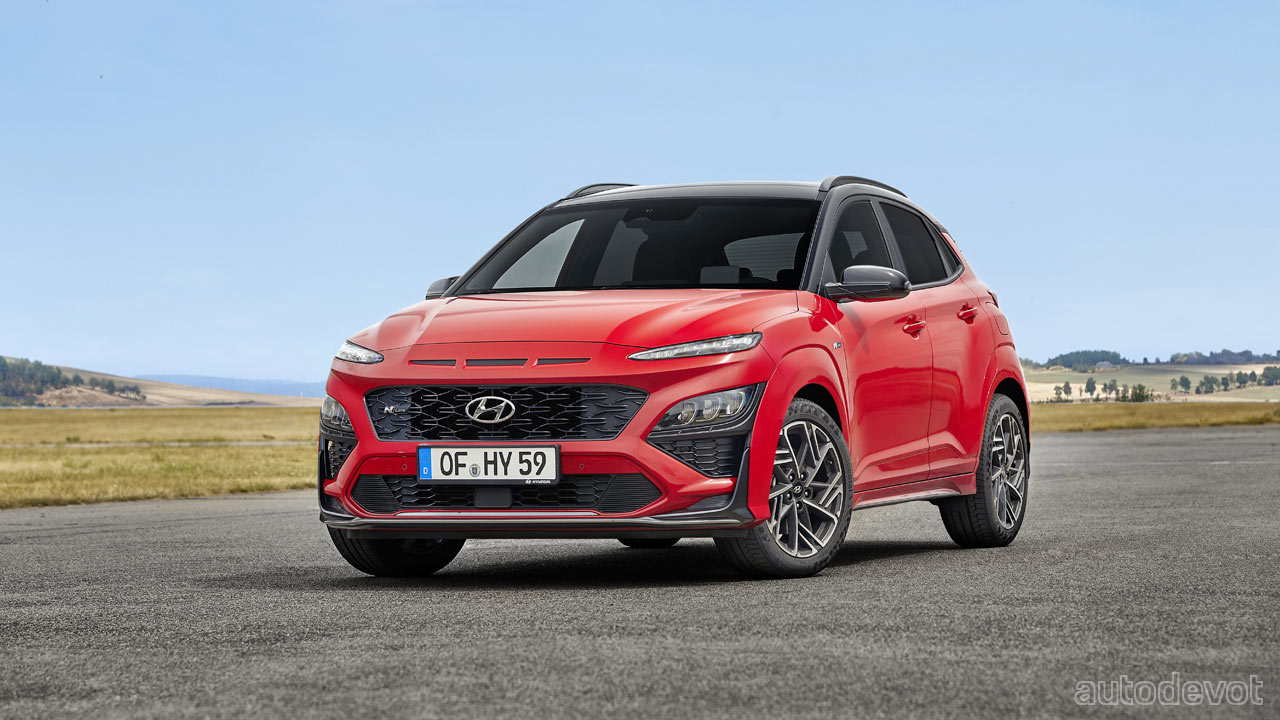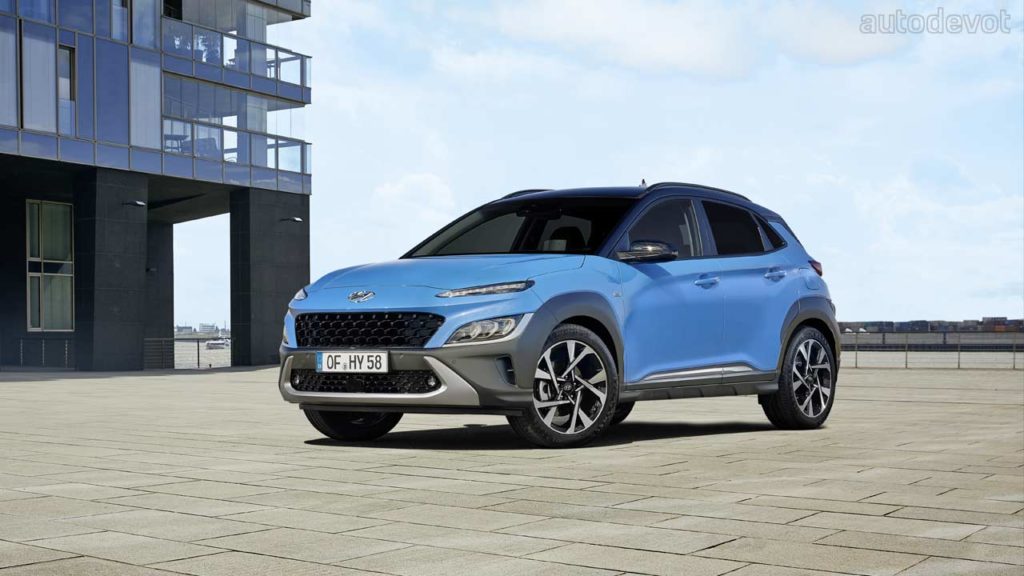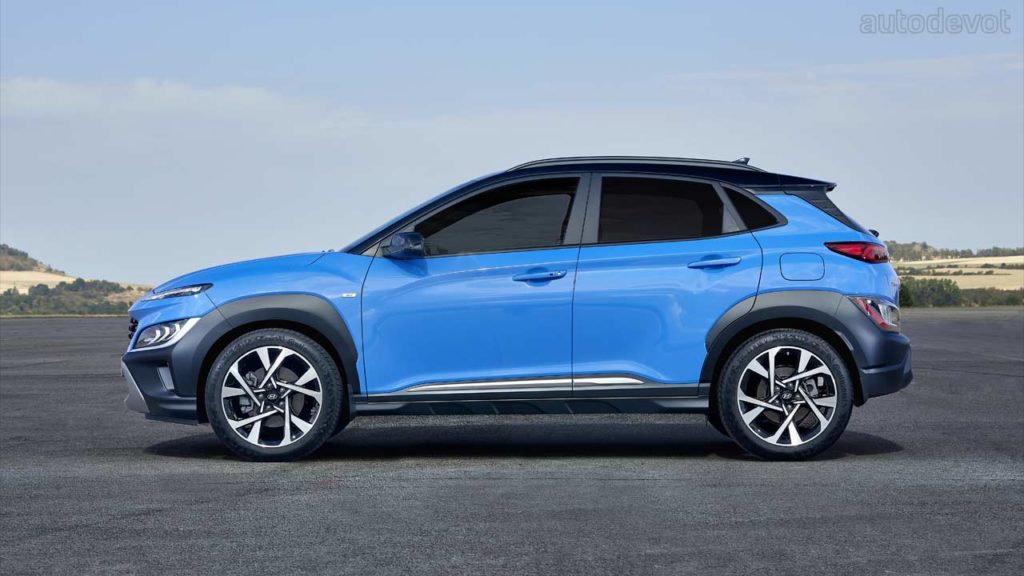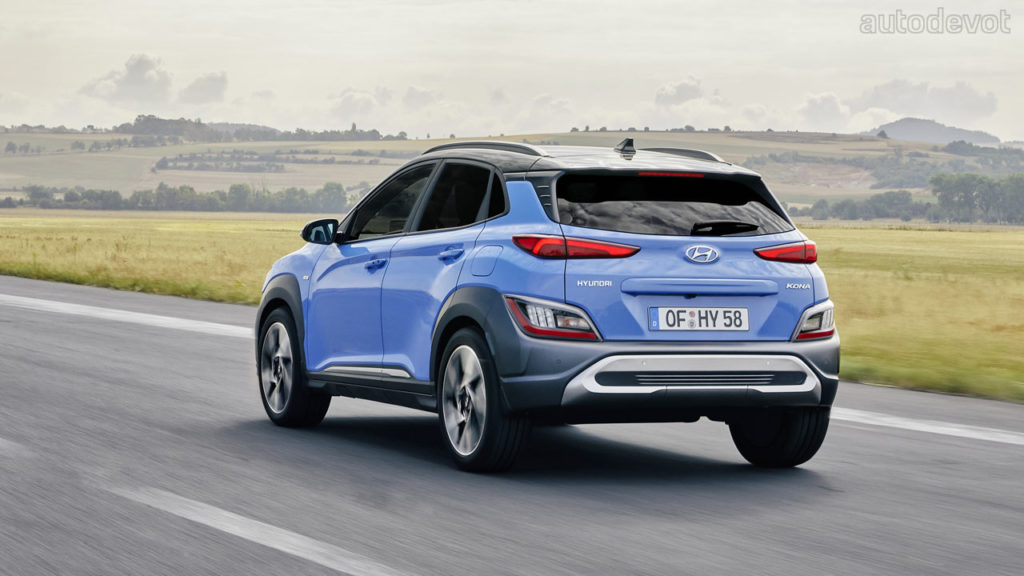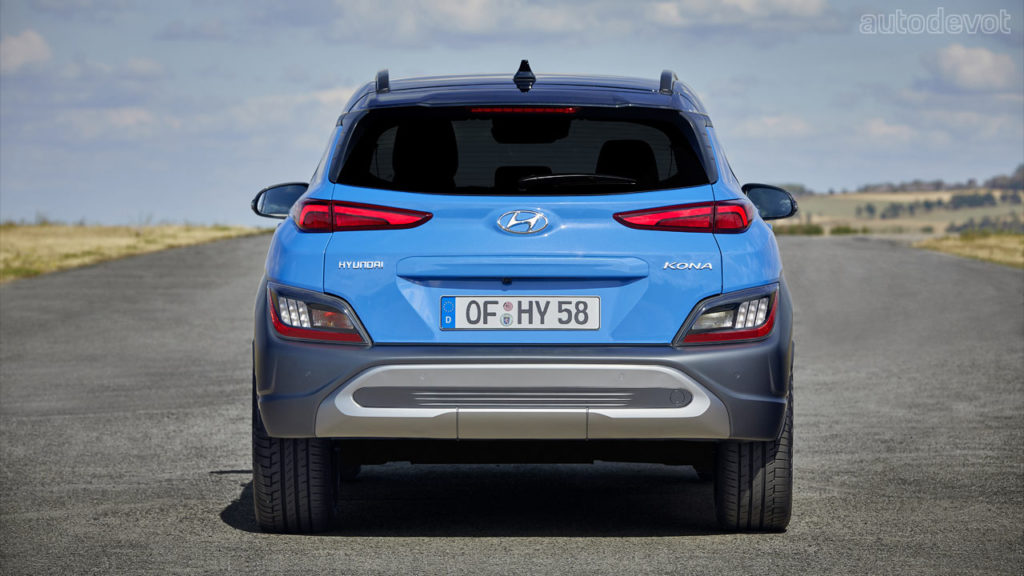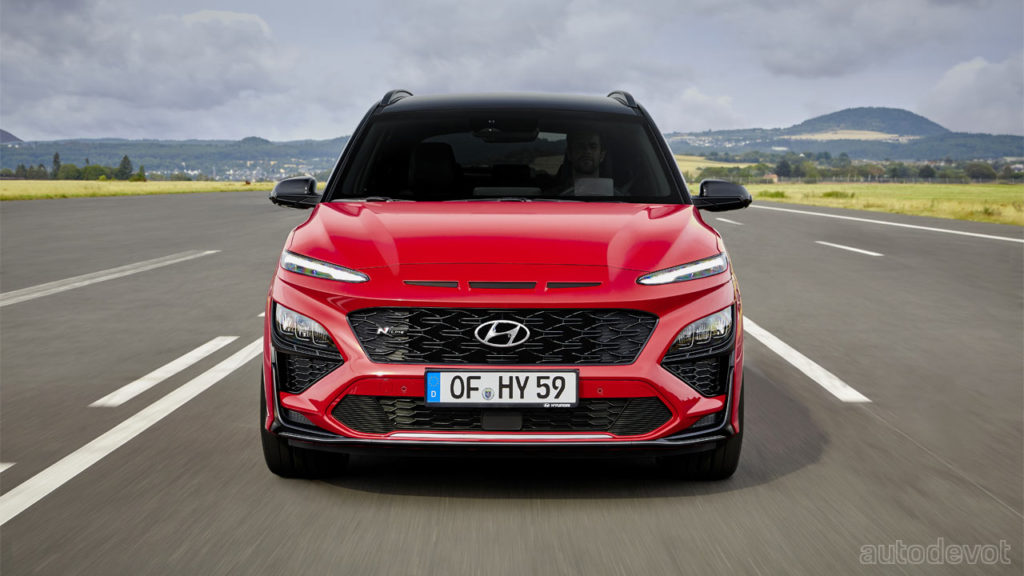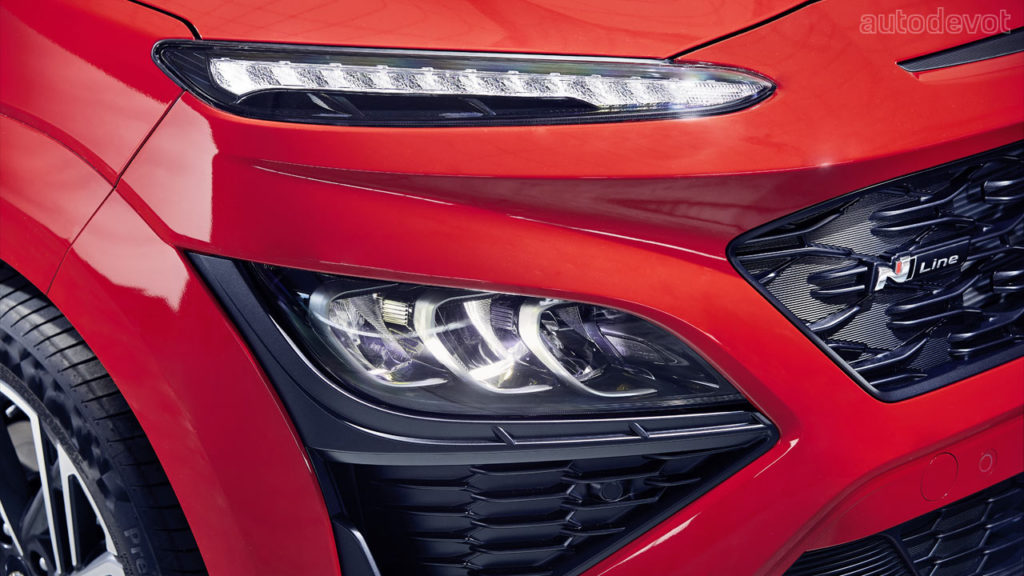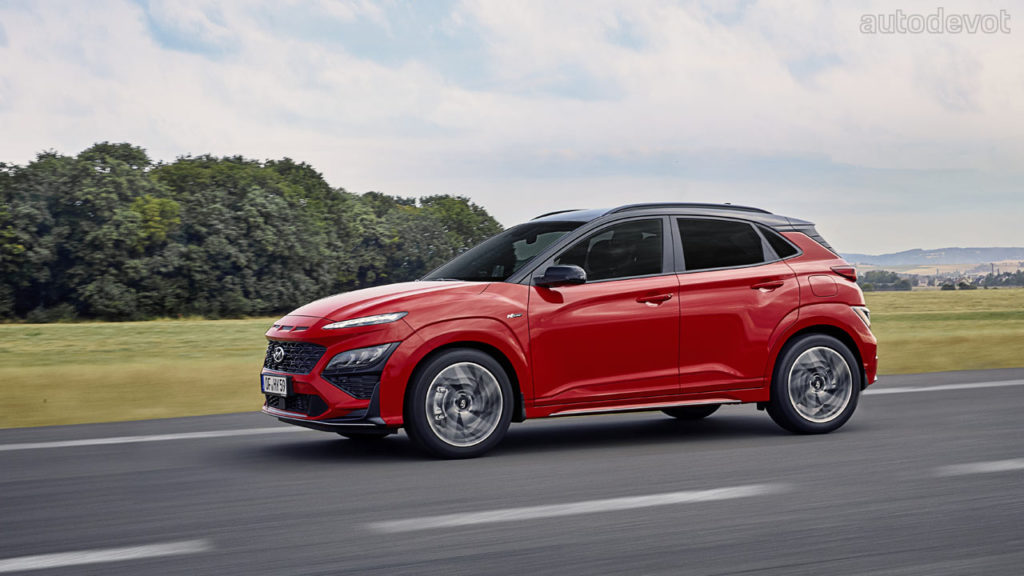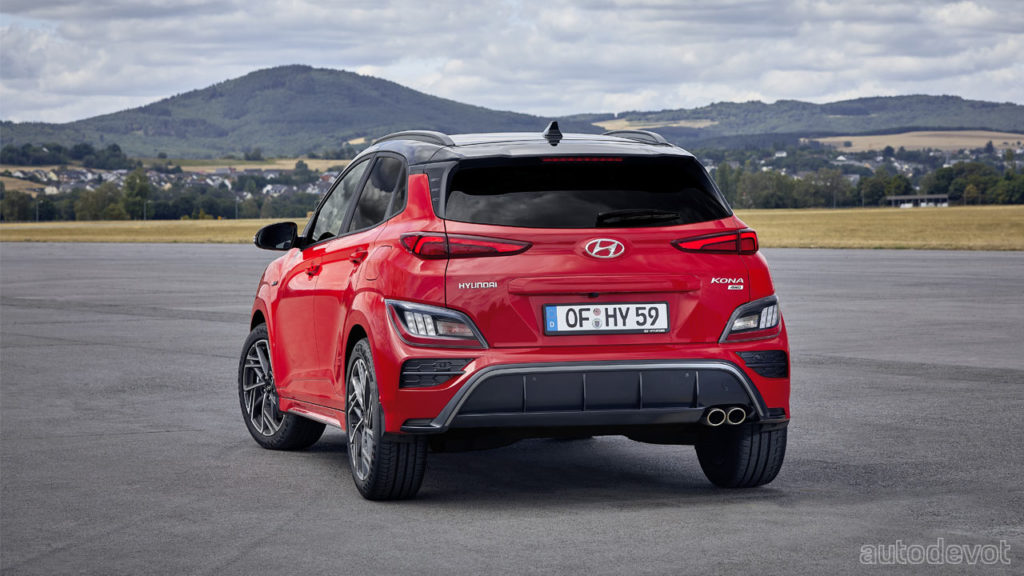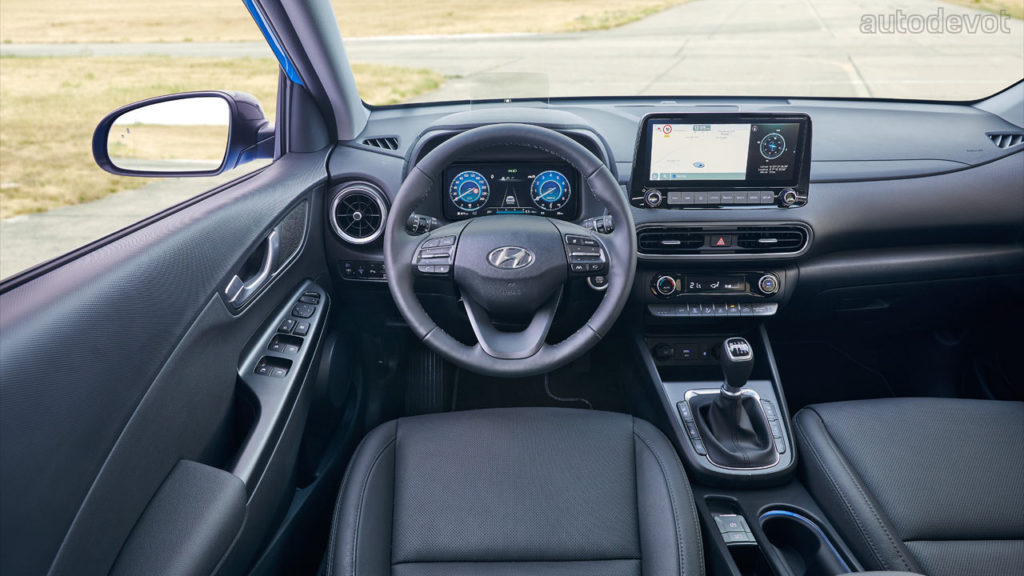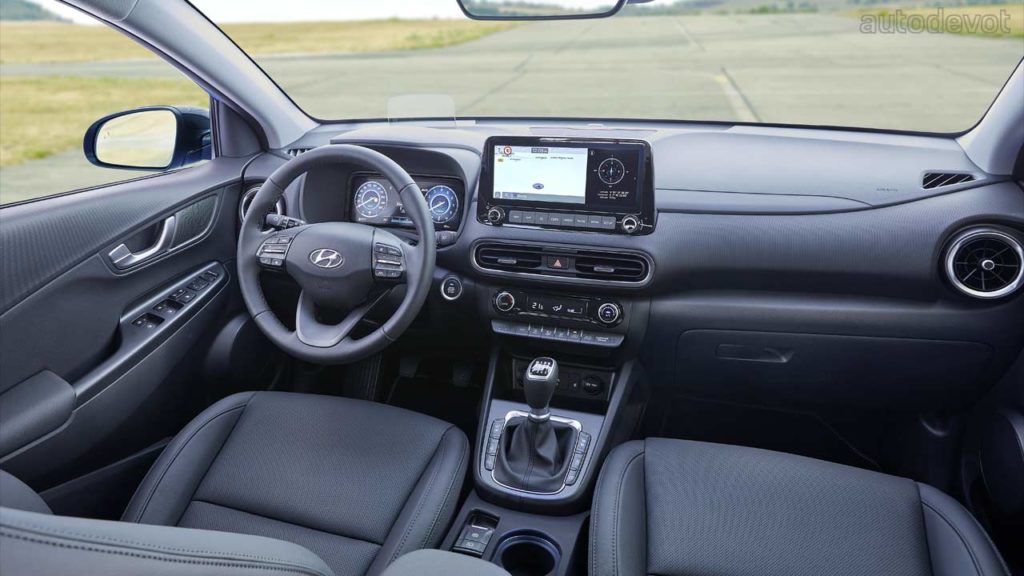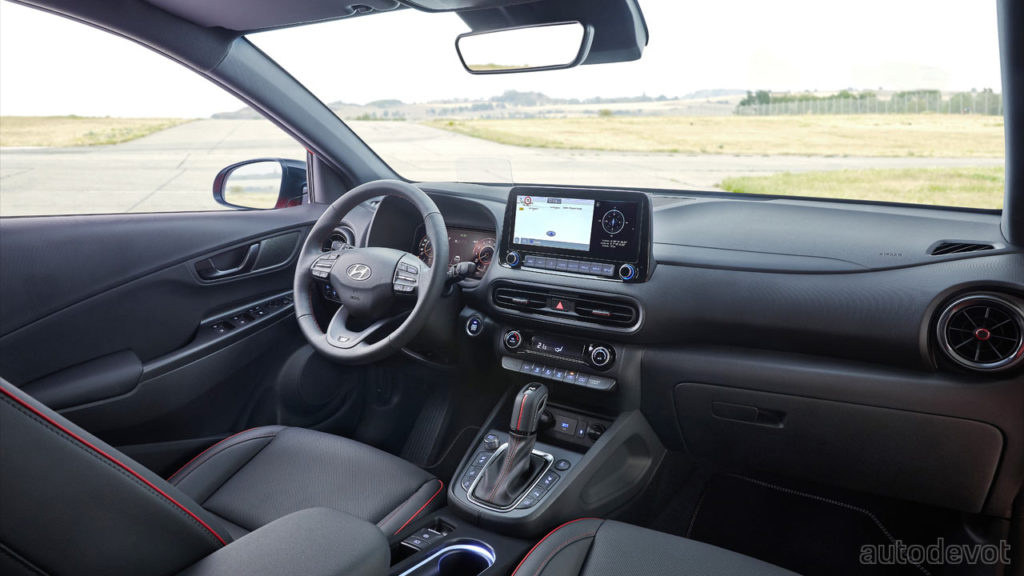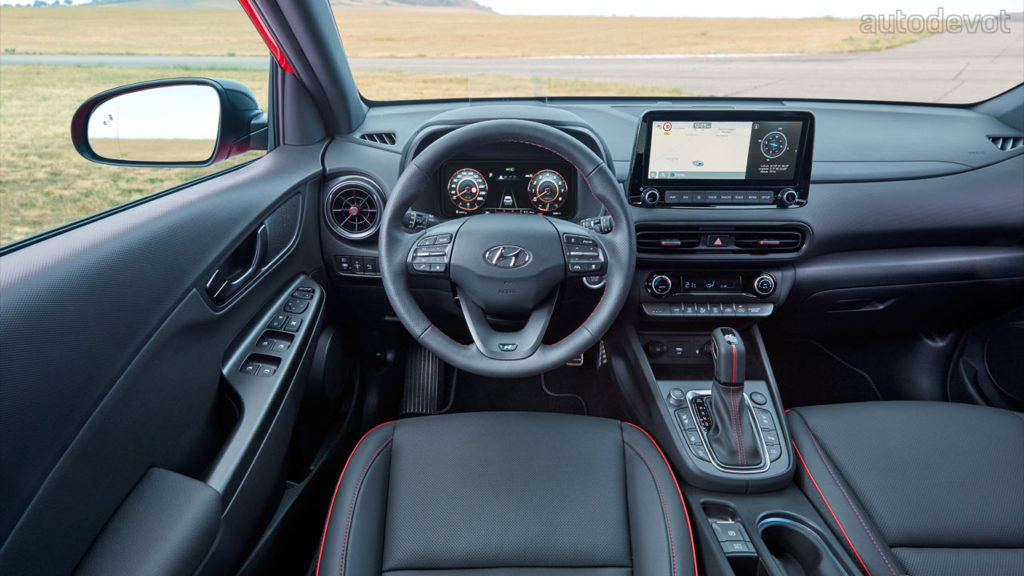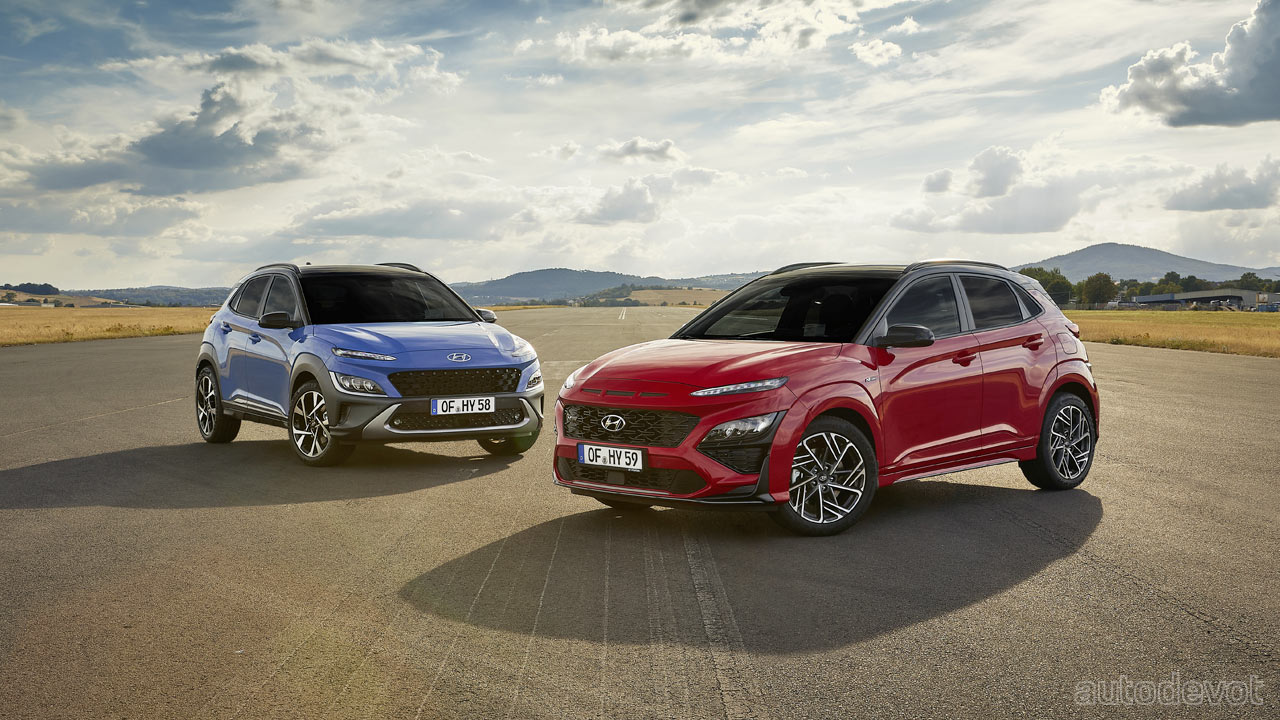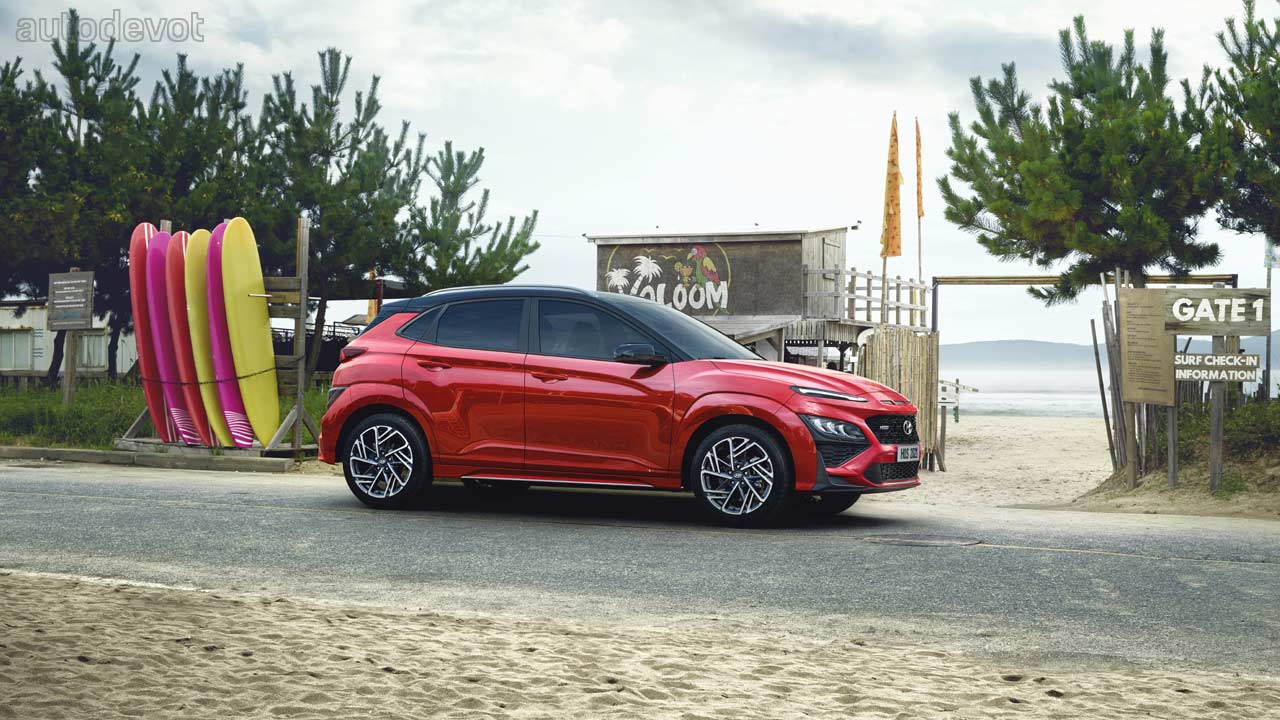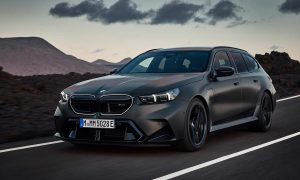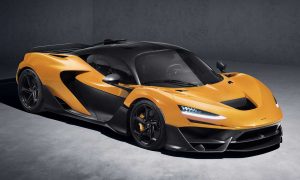With more than 228,000 units sold in Europe alone, the Hyundai Kona can be described as a successful product considering the fact that it is only 3 years old. However, 3 years is a pretty long time to not receive a facelift. It has happened now and it includes a sporty N Line trim.
As for the styling tweaks, well, the new Kona is still recognizable as a Kona with its dual-lamp setup. However, the narrow upper slit has been closed off and replaced with the Hyundai logo. The main grille now looks a bit wider and there’s a restyled bumper with a larger lower grille. And yes, the LED running lights are narrower than before and the headlights are of a new design.
The side profile looks largely the same except for a new set of wheels — available up to 18-inches. At the rear, there’s a new taillight signature and the lower lights mimic the shape of the headlights. The rear bumper has been restyled as well.
Obviously, it’s the Kona N Line that carries the oomph factor with its sporty front and rear fascias complemented with black styling elements. While the tailpipes in the regular Kona are completely hidden from view, the N Line sports twin tailpipes housed inside a diffuser-like applique. The Kona N Line also gets its unique 18-inch alloy wheel design.
All the styling tweaks have somehow made the Kona 40 mm longer than before. Five new exterior colors have been added to the palette: Surfy Blue, Dive in Jeju, Ignite Flame, Cyber Gray, and Misty Jungle. Every color can be combined with the Phantom Black two-tone roof. The other colors would be Chalk White, Dark Knight, Pulse Red and Galactic Gray.
The interior might not look all that different from the outgoing Kona, but if you look again, you’ll find a larger 10.25-inch touchscreen display which is optional, and there’s also a 10.25-inch digital instrument cluster that debuted in the new i20. The N Line interior (bottom two photos) gets the typical, all-black theme with red contrast stitching and piping. The graphics on the instrument display is also in red for the N Line.
As for safety and driver assistance features, the Kona gets Smart Cruise Control with stop and go function; Blind-Spot Collision-Avoidance Assist (BCA); Leading Vehicle Departure Alert (LVDA); Lane Following Assist (LFA); Forward Collision-Avoidance Assist (FCA) with pedestrian and cyclist detection; Rear Cross-Traffic Collision-Avoidance Assist (RCCA); Rear Seat Alert (RSA); Safe Exit Warning (SEW) and so on.
Powertrains
Moving on to the business end of the story then, the Kona can be had with a 198 hp (146 kW) 1.6-litre T-GDI Smartstream petrol engine paired with a 7-speed DCT. This powertrain is available in front-wheel drive or all-wheel drive configurations.
For those who care about fuel efficiency, the 136 hp (100 kW) 1.6-litre Smartstream diesel engine is combined with a 48-volt mild-hybrid system. The gearbox here is a 7-speed DCT or a 6-speed iMT. AWD is optional.
There’s also a 120 hp (88 kW) 1.0L T-GDI Smartstream petrol engine combined with a 48-volt mild-hybrid system and 6iMT. For those who don’t want a mild-hybrid, the 1.0L engine can be had either with a 7-speed DCT or a 6-speed manual gearbox.
Of course, there’s the Kona Hybrid with a 1.6-litre GDI engine and electric motor for a combined output of 141 hp (104 kW). The 43 hp (32 kW) electric motor draws juice from a 1.56 kWh lithium polymer battery pack.
Download the technical data sheet here for detailed information.
Hyundai said that the suspension has also been tweaked in order to improve driving comfort. The stabilizer bars were modified and so are the rear bump stops, benefiting the ride and lateral body control. The N Line has apparently received a specific steering tuning to match the character of the vehicle.
The new Kona and Kona N Line will arrive at European dealerships at the end of this year. The Hybrid will join the lineup at the beginning of 2021. The updates for the Kona Electric will be revealed at a later date.

Leave a Reply
Note: Comments that are unrelated to the post above get automatically filtered into the trash bin.
